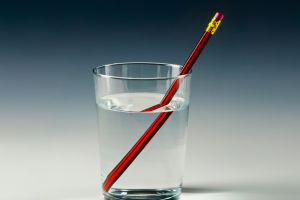Cruelty-Free Starts Here
Hi Lykkers! You’ve probably seen the little bunny logo on some beauty or cleaning products and thought, “That’s nice.” But what does cruelty-free really mean? And why does animal testing still exist at all, especially for everyday items like lotion or dish soap?
This guide is here to help you understand the deeper story behind those labels. We’ll take a look at the ethical concerns surrounding animal testing, explore the progress being made through legislation and innovation, and most importantly—show how you can make more compassionate choices in your daily routine.
Whether you’re new to this topic or already passionate about cruelty-free living, we’ll keep it friendly, informative, and action-ready.
Part 1: The Truth About Animal Testing
Let’s start with what animal testing looks like in the world of cosmetics and household goods—and why it’s facing growing criticism.
The Ethics in Question
More and more consumers are asking: is it fair to harm animals for products we use to look or feel better? With modern science offering safer, non-animal methods, the old justification—"It's the only way to test product safety"—doesn’t hold the same weight anymore.
It’s Not Just About Beauty
While cosmetics get the most attention, household cleaning products can also be part of the problem. Soaps, sprays, detergents, and even air fresheners may be tested under the same harsh conditions. The good news? Plenty of companies are proving that animal testing isn’t necessary at all.
Global Progress (and Gaps)
Some countries and regions, like the European Union, have banned cosmetic animal testing altogether. Others, however, still allow or require it in certain cases. That’s why checking the origin of your products—and understanding the laws behind them—is so important.
Part 2: Choosing and Supporting Cruelty-Free Options
Now that you understand the concerns, let’s explore how you can be a part of the change—without making your shopping list any harder.
Look for Trusted Labels
There are several reliable certifications that confirm a product wasn’t tested on animals. Keep an eye out for logos like Leaping Bunny, Cruelty-Free International, or PETA’s cruelty-free list. These aren’t just decorative—they represent real commitments to transparency and ethical practices.
Go Beyond the Label
Some companies say they’re cruelty-free, but still sell in countries where animal testing is required by law. If you're curious, take a minute to check their stance online or use cruelty-free product directories. Apps like “Cruelty-Free” or “Yuka” make it easy to scan and learn more while you shop.
Try Alternatives With Confidence
Many cruelty-free brands offer products that are just as effective—sometimes even better—than mainstream ones. From shampoo to surface cleaner, you’ll find plenty of options that are kind to animals and kind to you. If you're not sure where to start, try swapping out one item at a time. It’s about progress, not perfection.
Support Legislative Efforts
Laws change when people speak up. Support legislation that bans or restricts animal testing for cosmetics and household goods in your region. Sign petitions, follow advocacy groups, and stay informed. Your voice adds weight to the growing global demand for kindness over cruelty.
So Lykkers, choosing cruelty-free isn’t just about what’s on your shelf—it’s about what you stand for. Every time you reach for a product that didn’t come at an animal’s expense, you’re voting for a future where science, beauty, and compassion can work together. By learning the facts, making thoughtful swaps, and supporting change, you're helping turn everyday habits into acts of kindness. Let your next purchase be one that makes the world a little better—for everyone.
-
 Underwater RefractionDiscover how light bends underwater and how to capture perfect shots!
Underwater RefractionDiscover how light bends underwater and how to capture perfect shots! -
 Temperament Over TacticsYour Brain vs. Your Portfolio: Who's Really in Control?
Temperament Over TacticsYour Brain vs. Your Portfolio: Who's Really in Control? -
 Billund: Bricks & BeyondLEGOLAND, safaris, waterparks, and fjord trips—Billund's guide maps prices, timings, and routes for a family-first Jutland escape.
Billund: Bricks & BeyondLEGOLAND, safaris, waterparks, and fjord trips—Billund's guide maps prices, timings, and routes for a family-first Jutland escape.
Copyright © zogu 2021 - 2025. All Right Reserved.